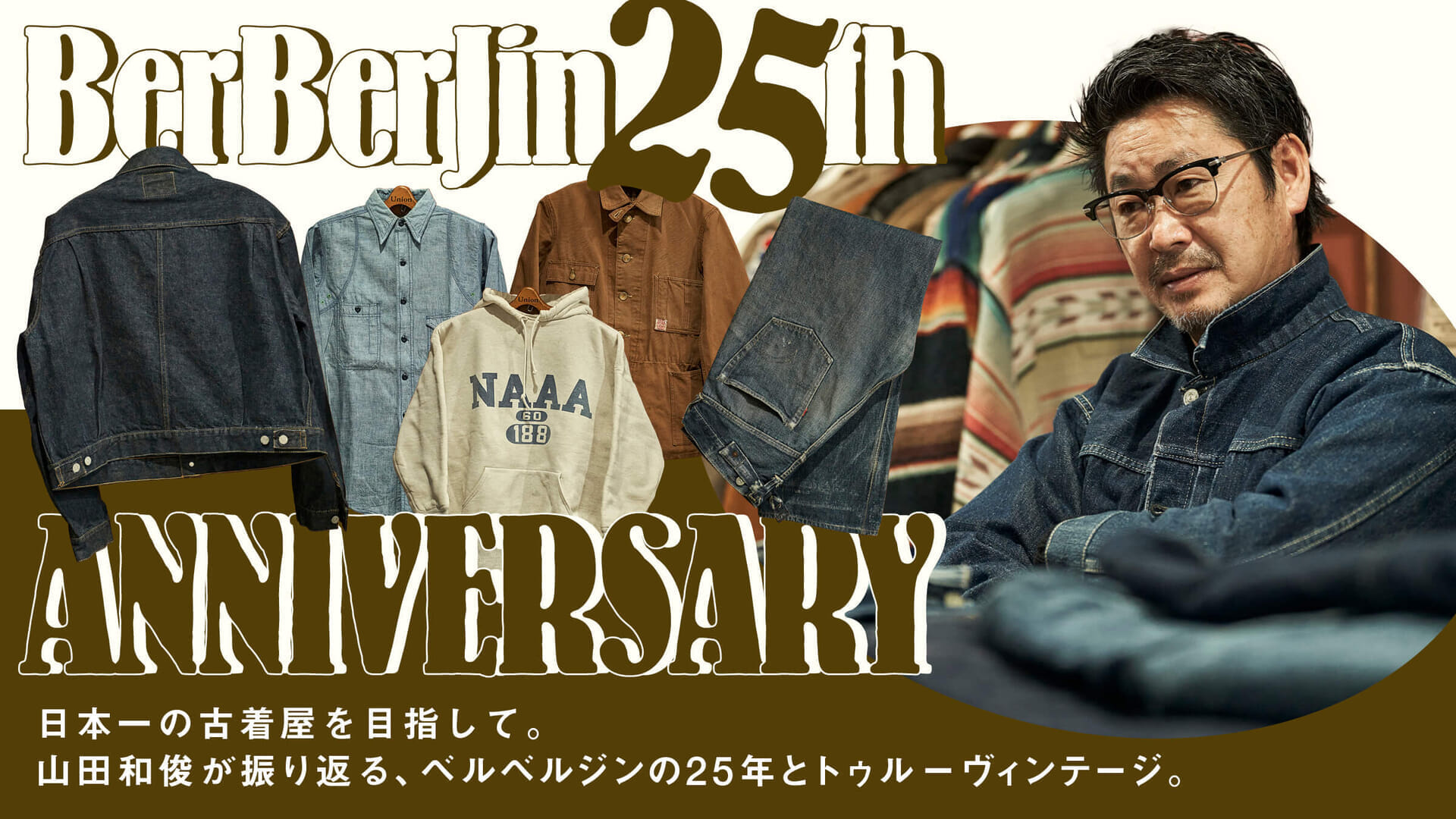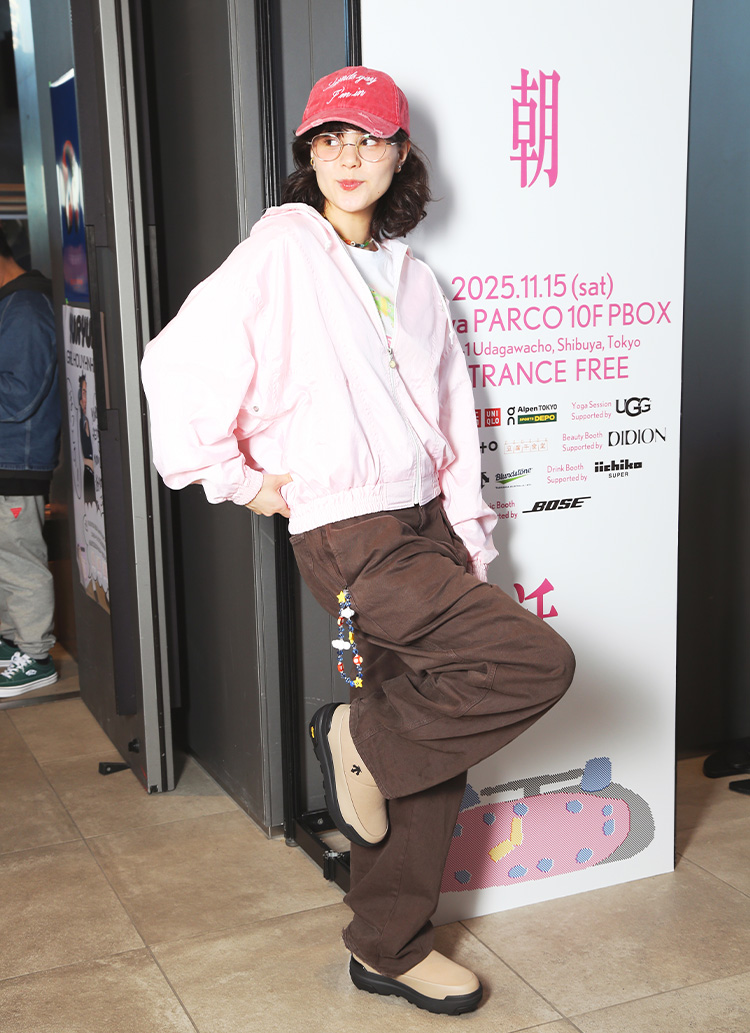Why do we still insist on buying from the U.S., even as the structure of the vintage clothing industry is changing?


The situation surrounding used clothing has changed dramatically over the past 25 years, with Thailand and other Southeast Asian countries attracting more attention as buying destinations, and overseas dealers coming to Japanese stores to buy from them. In the midst of these changes, "Berberzine" has maintained its consistent stance since its establishment of purchasing in the U.S., washing locally, and sending the priced items to Japan. What is the true reason for this?
-While the "Berberzine" buying system has been in place for 25 years, the state of the vintage clothing industry seems to have changed as well.
Yamada:That's right. Kids from all over the U.S. are getting into vintage clothing, partly because information is readily available now. Southeast Asia became the focus of attention as a supplier because there was vintage mixed in with the used clothes sent as relief supplies, but nowadays kids are picking up vintage at thrift stores and rug stores without missing a beat. So there may be more coming out of the U.S. than there used to be. The Rose Bowl has become the biggest one yet. The young kids are great.

-What about the price aspect?
Yamada:It's expensive. But it depends on the dealer. For example, kids know the market price of T-shirts, but they don't know the market price of our true vintage items. Sometimes they sell items that cost hundreds of thousands of yen for $5, so when I find something like that, my adrenaline kicks in and my hands start shaking (laughs).
-I thought digging was a thing of the past as knowledge and information about used clothing became more widely available, and I was surprised when I asked almost every used clothing store about it and they told me that they "really don't get things anymore.
Yamada:Yes, there are. The other day, I saw a pair of coveralls with a chinstrap from "SUPER PAYDAY" on an American kid's Instagram, and when I asked the price, he said $50, so I decided immediately. I thought, "What's wrong with buying from Insta," but I thought, "If I don't do that, I won't be able to collect anything, and since I'm communicating with Americans and paying money to go to the U.S., maybe it's okay (laughs). (Laughs.) Until then, we had been purchasing at a high price, so we need something like that once in a while to keep the balance. I wouldn't be happy at all if I got an offer from a famous dealer to buy some great denim. It's more like, "Oh, ......, I bought it" (laughs).


-What is the reason why "Berber Gin" insists on purchasing from the U.S. when purchasing from other countries is becoming more and more common?
Yamada:Since it is American vintage clothing, it is more romantic to buy it locally, isn't it? We buy our clothes in the U.S., wash them locally, and transport them to Japan, but I would love to wear old clothes that have been exposed to the California sun. It's completely a matter of mood.
-The value of vintage denim has risen sharply in the past few years, largely due to the presence of "Berberzine," and I think they are moving with awareness as a trendsetter and price leader.
Yamada:That's not true. Yutaka (Fujihara Yutaka) is the one who sets the price of denim in the store right now. Even the Levi's ®︎ thongs we are planning to sell for our 25th anniversary are priced close to 10 million yen depending on the item, but a few years ago they were priced at around 1.5 million yen. A few years ago, the price was around 1.5 million yen. As for the pricing of denim, the changes are so drastic that I can't keep up with them.

-I'm not talking about the "faux-alpha" stock I mentioned earlier that I regret selling, but perhaps not selling at a discount is what keeps vintage denim valuable.
Yamada:No, the current denim market is not my intention, and I wanted to sell at a lower price. I set the price for the regular denim in the main store, but it should be cheaper than other stores. If a staff member says to me, "We sold it for 150,000 yen on Mercari, so let's sell it for 120,000 yen," I say, "Last time we sold it for 40,000 yen, so let's set the price at 60,000 yen. Otherwise, customers who have been coming to us for a long time will leave, and I don't want to take advantage of a trend and raise the price.
-I think the way of vintage clothing has also changed, as things that were treated as regular at the time are now recognized as vintage. What do you think will happen in the next 25 years?
Yamada:As I mentioned earlier, the number of young vintage clothing lovers is increasing in the U.S. They start out with T-shirts, but some of them are beginning to realize the appeal of true vintage and are searching for it. Now vintage clothing is popular in Japan, but if even one in ten of the kids who started out looking for vintage clothing as a fashion item becomes interested in true vintage, I think the future will be bright.









